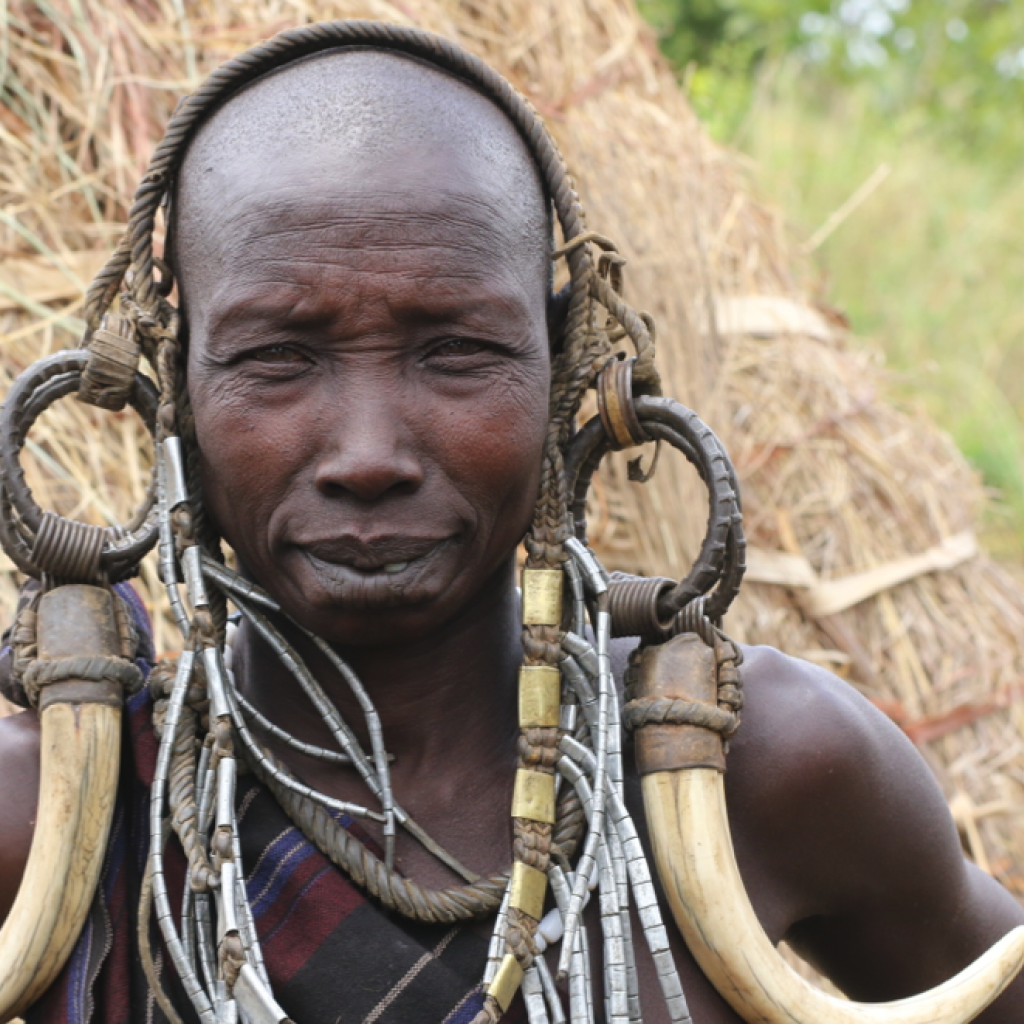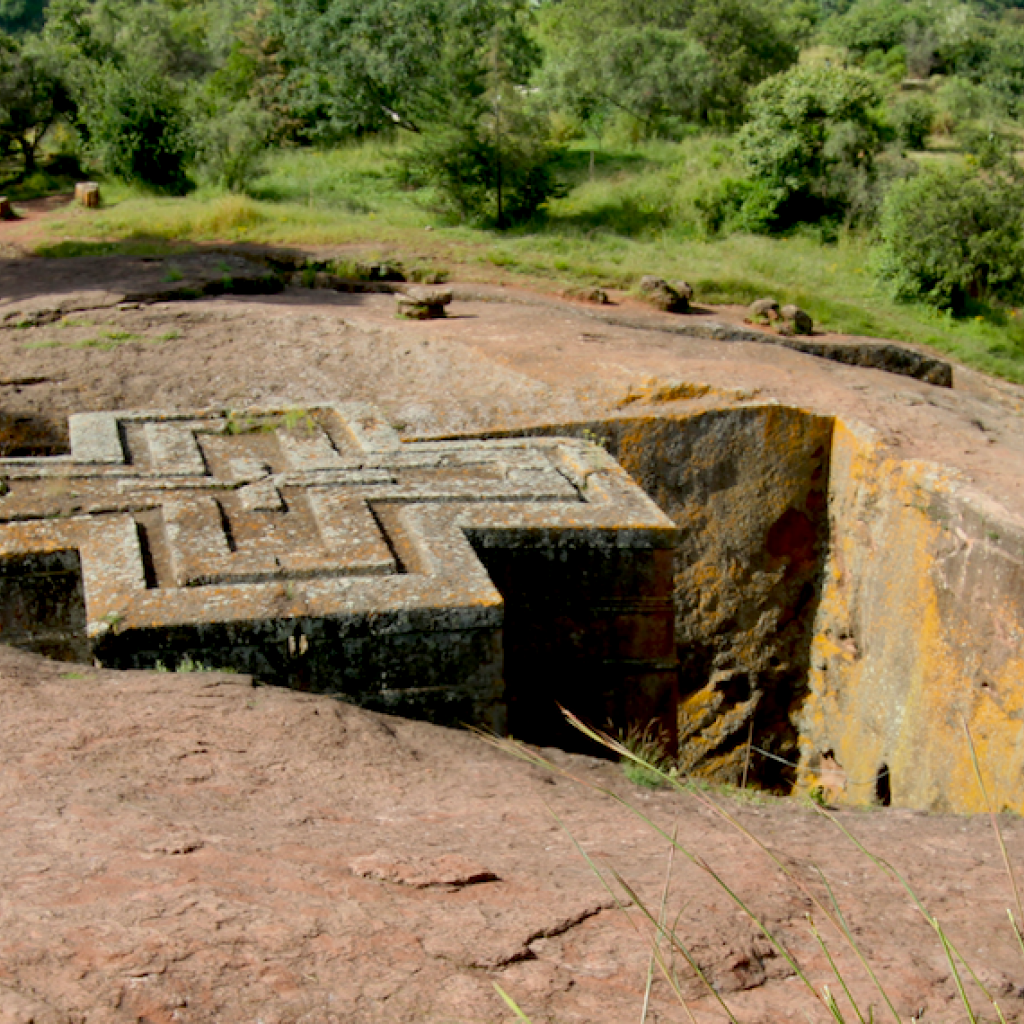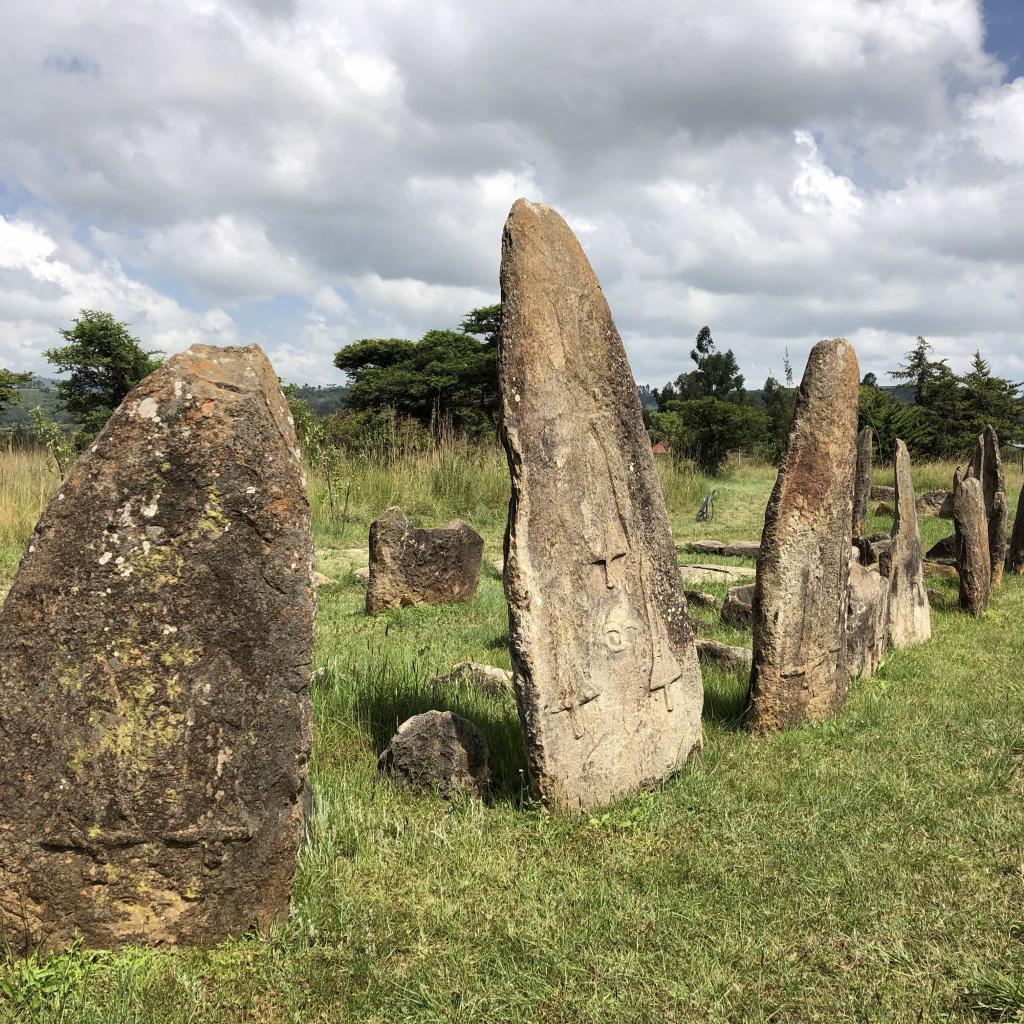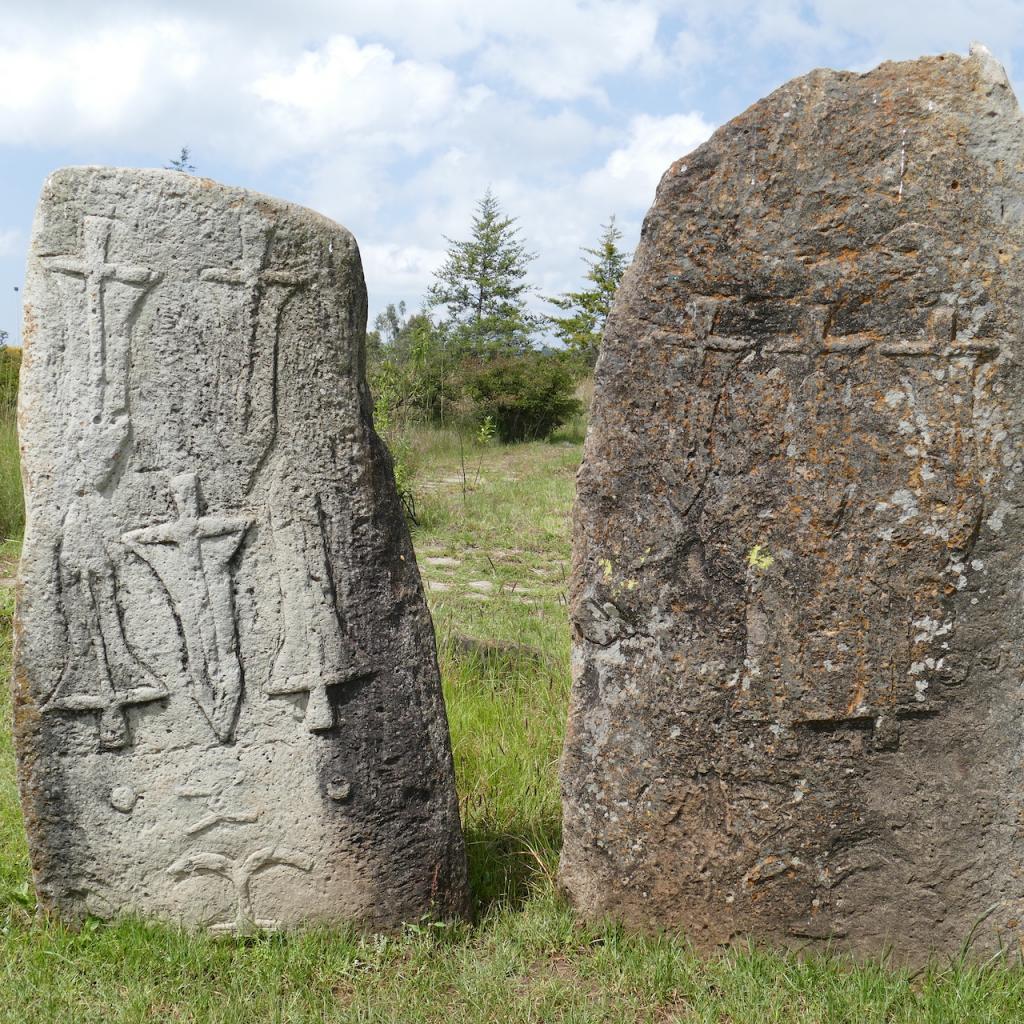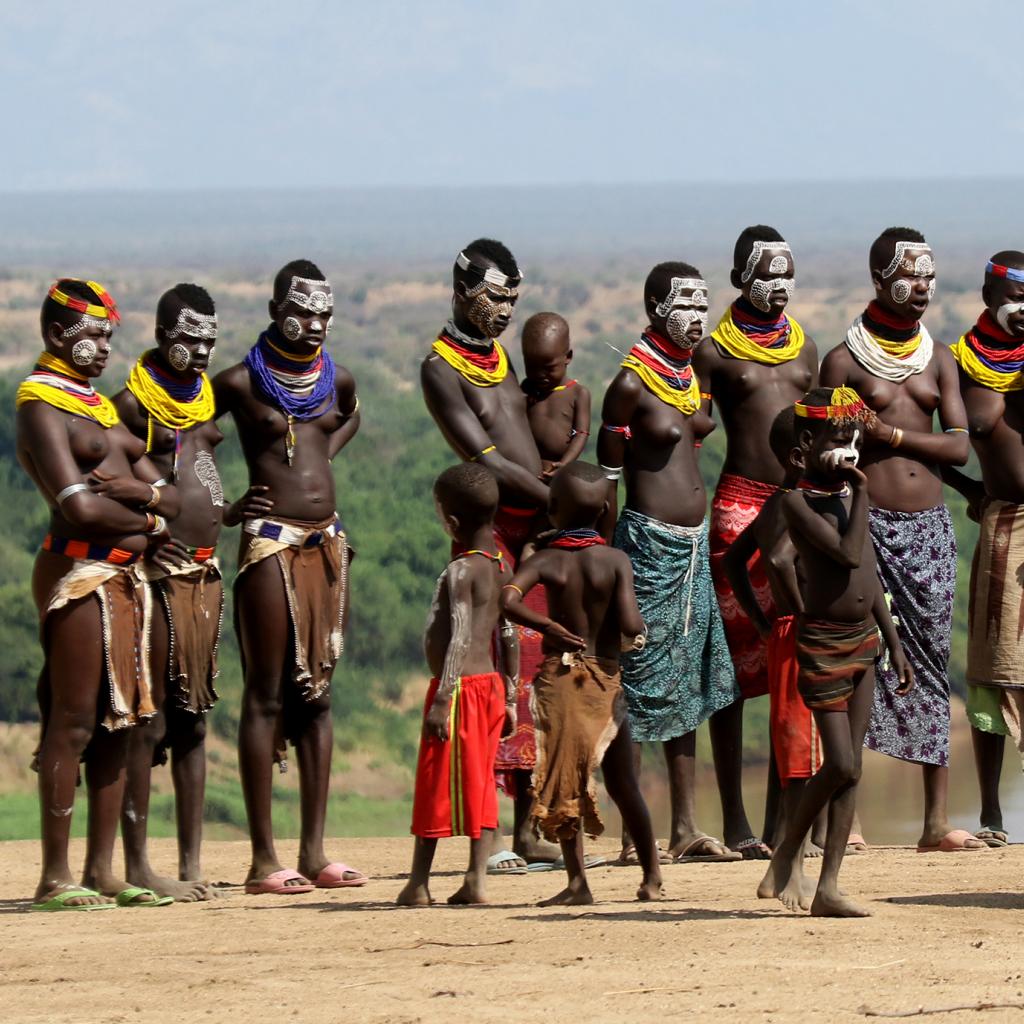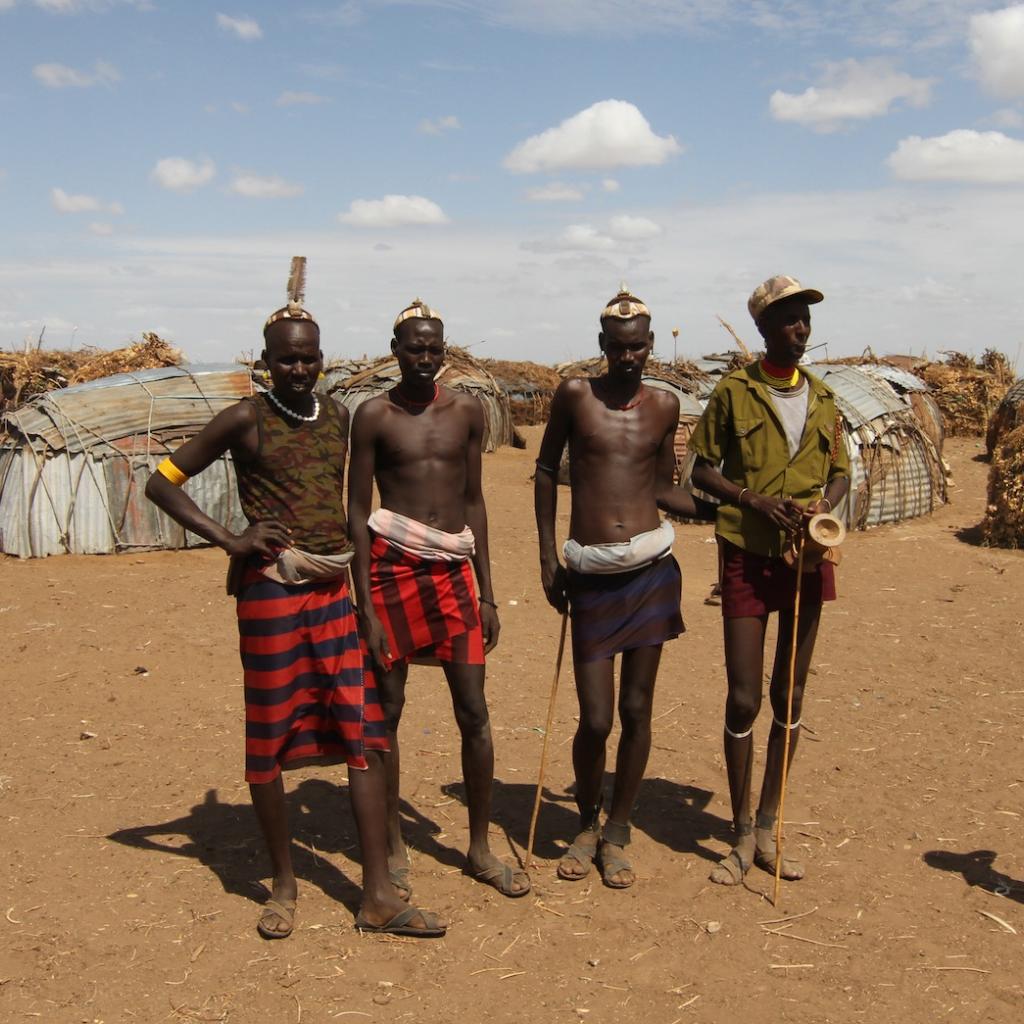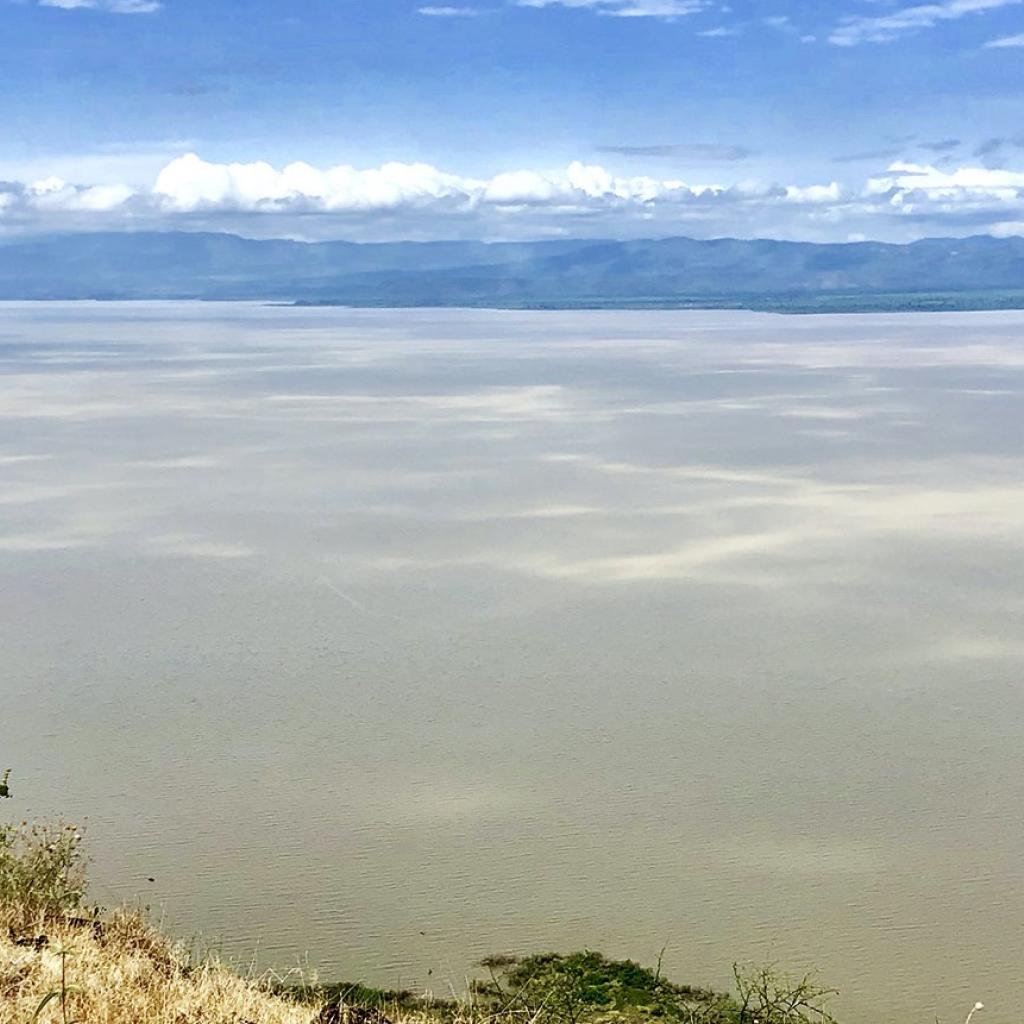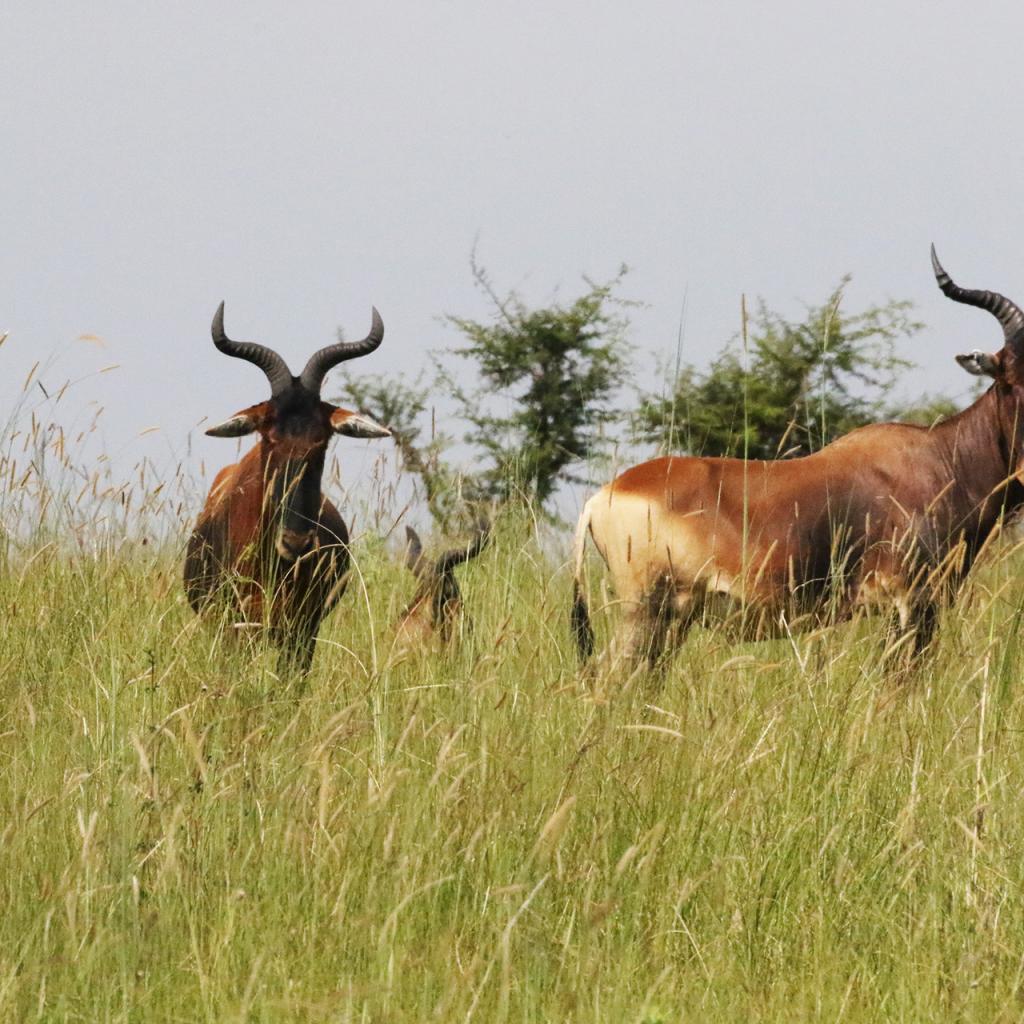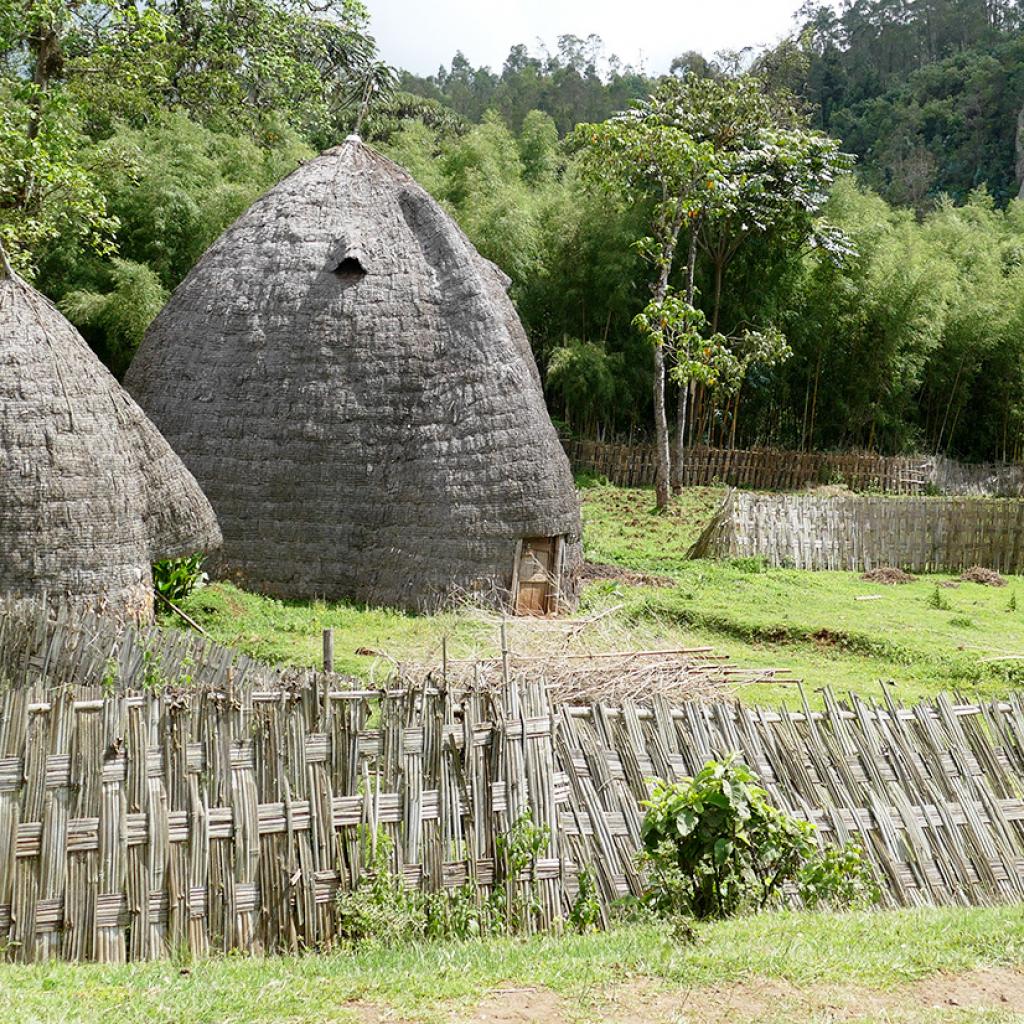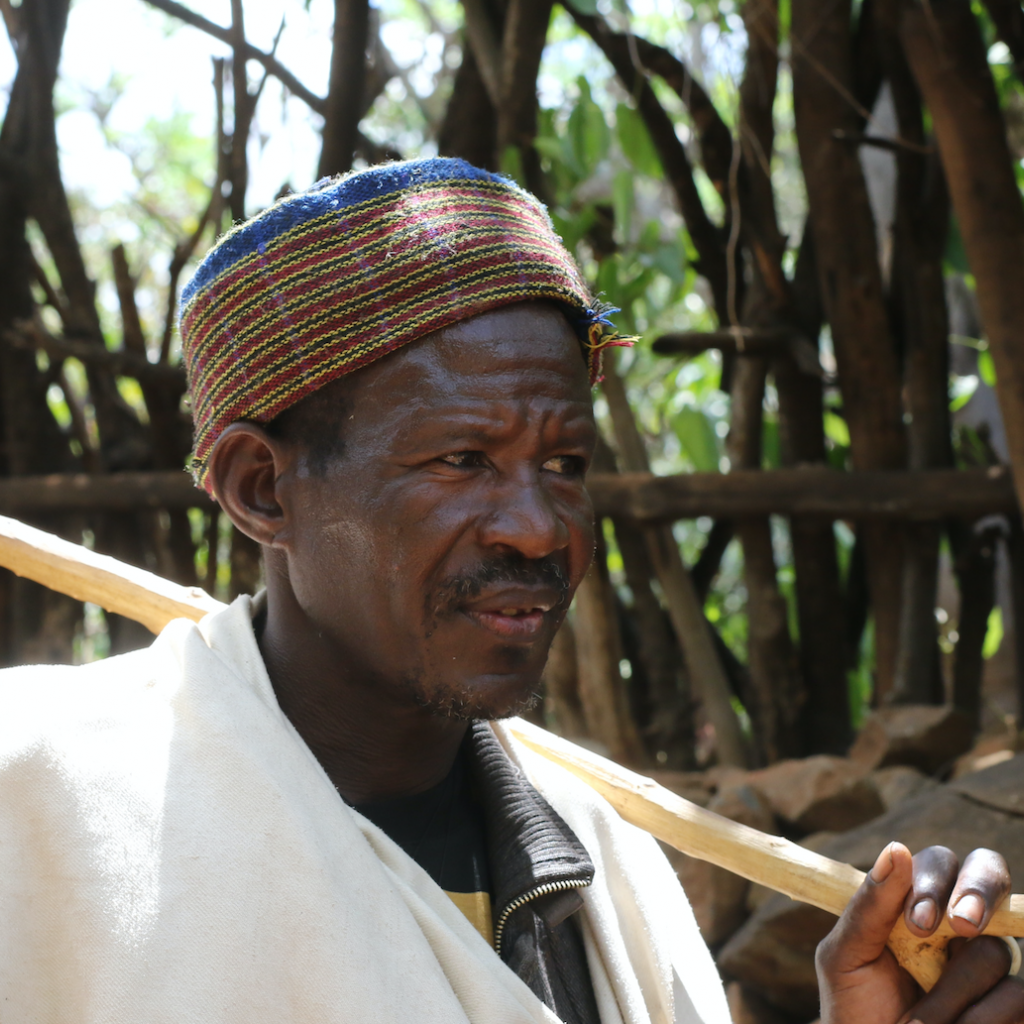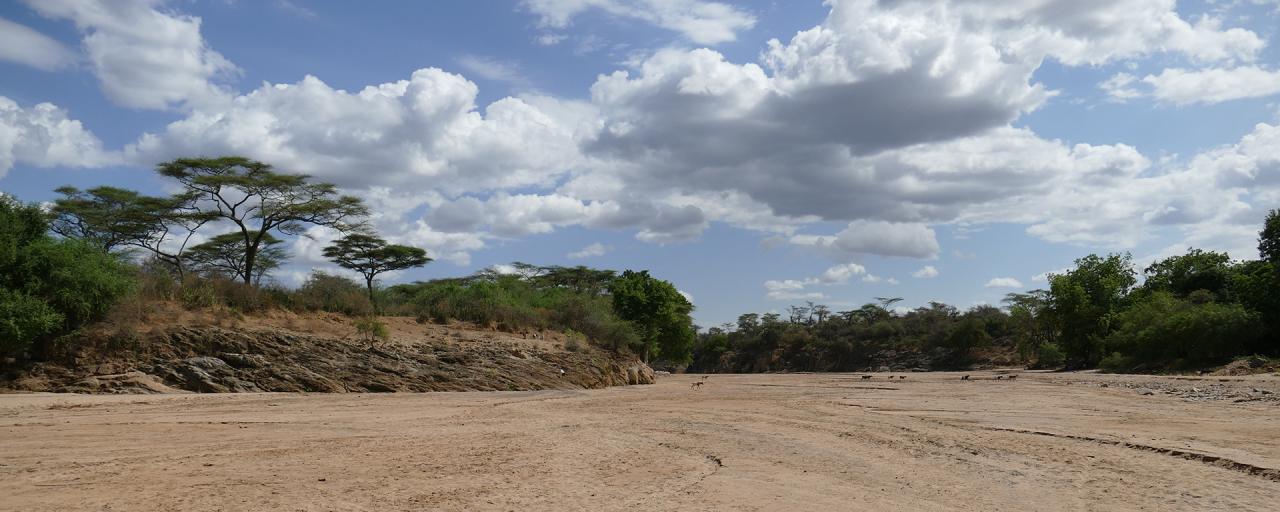
Ethiopia: Omo valley - Photo Credits: Romina Facchi
The travel itinenary to Ethiopia between history and culture
Our trip to Ethiopia starts from Lalibela, a city famous for its churches carved into the rock, that have been declared World Heritage by UNESCO; a place pervaded by a mystical and sacred atmosphere.
The rock churches and monasteries in the surroundings of Lalibela are masterpieces rich in history, superb examples of architecture inserted in a natural and scenic context of breathtaking beauty: wide valleys and mountain ranges stretch out as far as the eye can see while the bearded vultures fly high in the sky in search of prey.
After Lalibela it is the turn of Addis Abeba, the capital of Ethiopia.
Addis Ababa is the typical African megalopolis that hides precious jewels like the National Museum of Ethiopia that preserves, among other finds, the skeleton of Lucy, the most famous Australopithecus in the world, and the Orthodox Cathedral of Saint George, that presents a unusual octagonal plant.
Our journey continues by car towards the South, to Arba Minch, this town is located in the area of the lakes of the Great Rift Valley; from the higher quarters you can enjoy a spectacular view of Lake Chamo and Lake Abaya, that are separated by a mountainous strip, that is called "the bridge of God" and that, together with Lake Chamo, constitutes the Nechisar National Park.
Arba Minch offers much to see and is also a technical and inevitable stop to reach the Omo Valley, that is even further South; on the way back we stop to explore this area.
We head towards Turmi, a sleepy and dusty town that is the perfect base to visit the Omo Valley, it is strategic to reach the villages of the various ethnic groups that inhabit these semi- arid lands.
Turmi is in the land of the Hamer, a rather interesting local market is held here and above all you can learn more about the traditions of this population.
The Hamer are among the most beautiful and characteristic populations of the Omo Valley, they are kind, smiling and hospitable and one of their rites of passage to adulthood is one of the most beautiful and complex ceremonies on the continent: the bull jump.
Turmi is located at the crossroad of the two main roads of the region, one of which reaches Key Afer, a town that comes alive every Thursday with a large market where people belonging to different ethnic groups in the region come to sell and buy products of every kind, among the populations that are in this multi-cultural market there are the Hamer, the Banna and the Aari.
Roaming around the market allows you to get in touch with people and learn more about their lifestyle and the difficulties they face on a daily basis.
Among the first populations we meet during our journey there are the Kara, they live on the banks of the Omo River and are recognizable by the practice of body painting and body modifications: the body is painted with chalk and ocher, creating elaborate geometric designs and, even today, they usually drill a hole under the lower lip, where they insert a thin wooden stick or an acacia spine.
The marketin the town of Dimeka is also interesting, even though it is almost entirely frequented by the Hamer and the Bana, who closely resemble the Hamer "cousins".
The other important road that branches out from Turmi leads Southwards, towards Kenya, following it you reach the town of Omorate, that is located on the bank of the Omo River; here we meet the population of the Dassanech, a population who remember the Samburu or the Turkana who live in neighboring Kenya and who inhabit the basin of Lake Turkana.
Here the temperatures are high and the small Dassanech huts do not offer much shelter from heat and sun, life is difficult even if the proximity of the river allows fishing, thus providing a regular source of protein.
From Turmi we move to Jinka, here we are in the land of the Aari, a population who abandoned traditional villages to live in more modern brick houses; the Aari are a hard-working population, we visit the blacksmiths' workshop, we witness the production of local grappa and how to cook the typical bread: the njera.
Here we also meet the Mursi, who live in the Mago National Park; this iconic population wears particular and photogenic accessories and hats.
Before returning to Arba Minch we stop at the town that takes its name from the homonymous ethnic group who lives in these lands: the Konso.
The Konso are famous for their terraced cultivation, that UNESCO has included in the List of World Heritage Sites, and for the splendid fortified villages, surrounded by thick stone walls.
In Arba Minch you can't miss the excursion on the waters of Lake Chamo, to admire the gigantic crocodiles and hippos, that inhabit the waters, as well as numerous species of birds, especially the wonderful Fish Eagles and pelicans.
We also carry out a safari in the Nechisar National Park, that includes Lake Chamo, the Bridge of God, a promontory that divides Lake Chamo from Lake Abaya and that
extends to the East of the two lakes.
This park offers splendid views over the lakes, right from the top of the Bridge of God, where you can also admire eagles and falcons engaged in hunting.
Birdwatching in the park offers good sightings while mammals are more difficult to spot due to the thick vegetation, the park protects zebras, greater kudus, buffalo, baboons, jackals, warthogs, dik diks, Grant's gazelles and a small population of 23 lions.
This journey then takes us to know the Dorze ethnic group with their incredible houses, built in natural fibers, up to 12 meters high and with a round base; their architecture is incredible and the windows and the entrance opening make them look like a fantastic creature.
With the Dorze we celebrate the Meskel, the most important religious festival for the Orthodox Christians of Ethiopia, it is an all-day festival that involves the whole village, very exciting and full of religious meanings.
The Senkele Wildlife Sanctuary is a reserve where we spot the endemic Swayne's Hartebeest, a very beautiful mammal, a herbivore with curved horns that risked extinction, before this sanctuary was established.
The journey then takes us to the area of the Rift Valley lakes: Lake Hawassa or Auasa, where fishermen are accompanied in their activities by hungry cormorants and pelicans; the Abidjattaand ShallaLakesthat are part of the Abidjatta-Shalla National Park.
The national park, in addition to protecting the two lakes to which it owes its name, offers the opportunity to spot some animals, including warthogs, ostriches, Grant's gazelles, greater kudus, jackals and Klipspringers, and above all to make an excellent birdwatching, admiring among others the pelicans, howling eagles, ospreys, flamingos, marabous and herons.
The last lake we visit is Lake Langano, here there is a high population of hippos and, on its shores, it is possible to admire the magnificent white and black colobus, as well as numerous species of birds, both water and land.
The time has come to return to Addis Ababa, to end the journey with a typical dinner, where there is certainly no lack of njera


